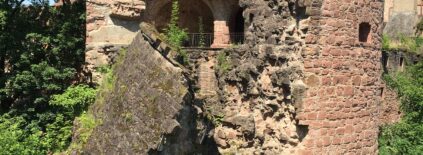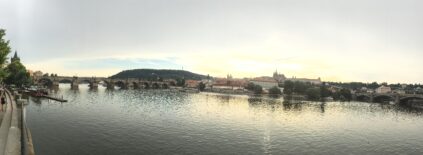Before we move on to Mt Fuji I want to describe our evening that can only be described as slowing down in Japan. Japan is a country that constantly balances the old and new — bullet trains race past ancient shrines, neon-lit cities rise beside wooden tea houses. But if there’s one experience that truly lets you step back in time, it’s staying at a ryokan. We checked into our ryokan, the Iroriyado Hidaya, in the late afternoon, a soft rain falling as we slipped off our shoes at the entrance. From that moment on, everything slowed down.
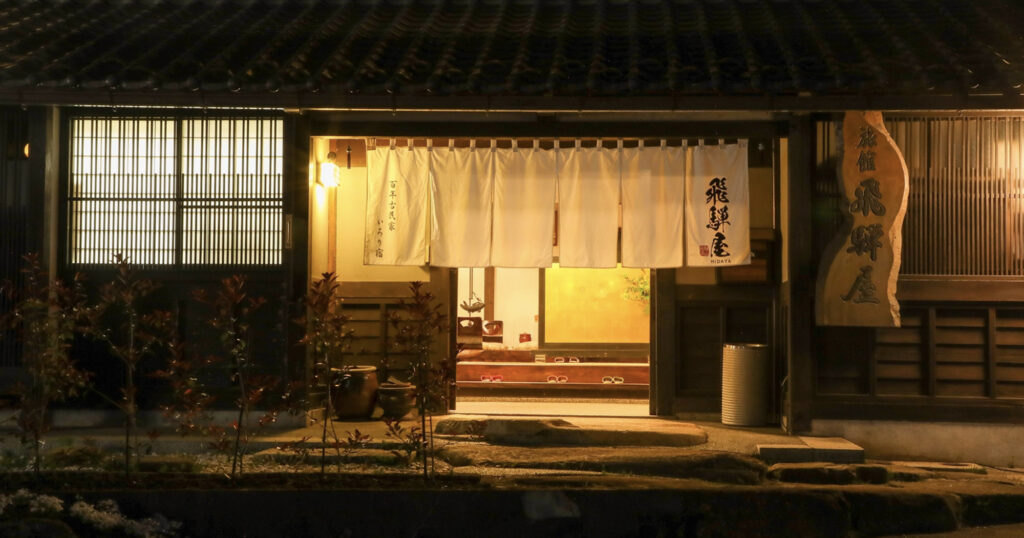
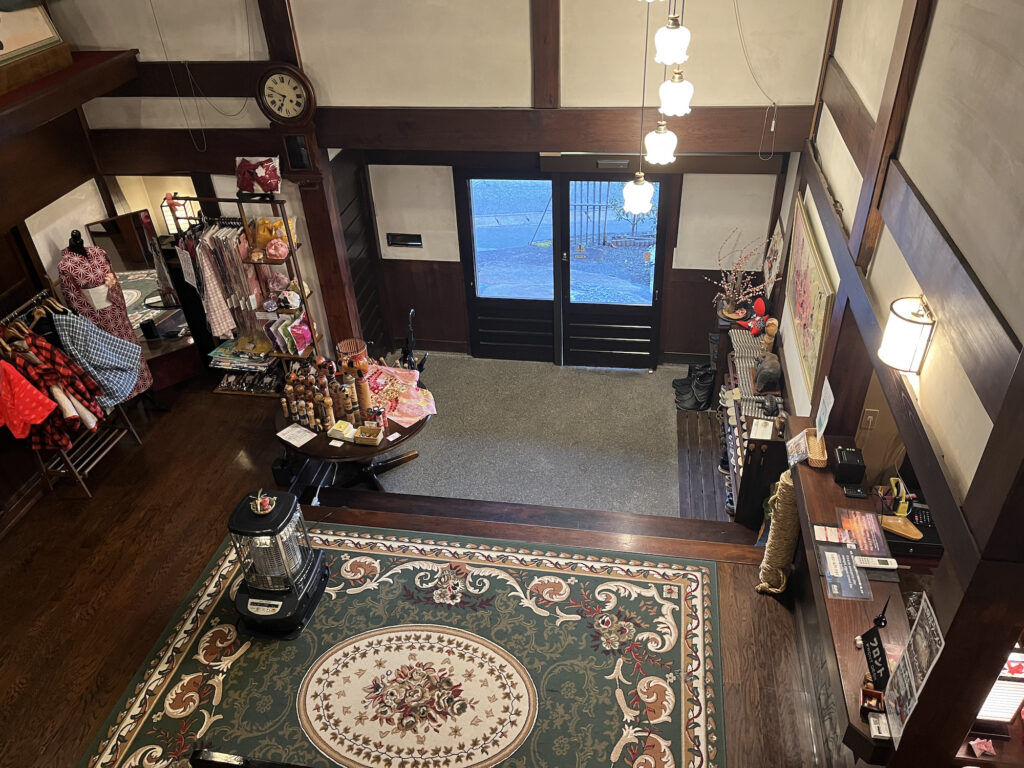
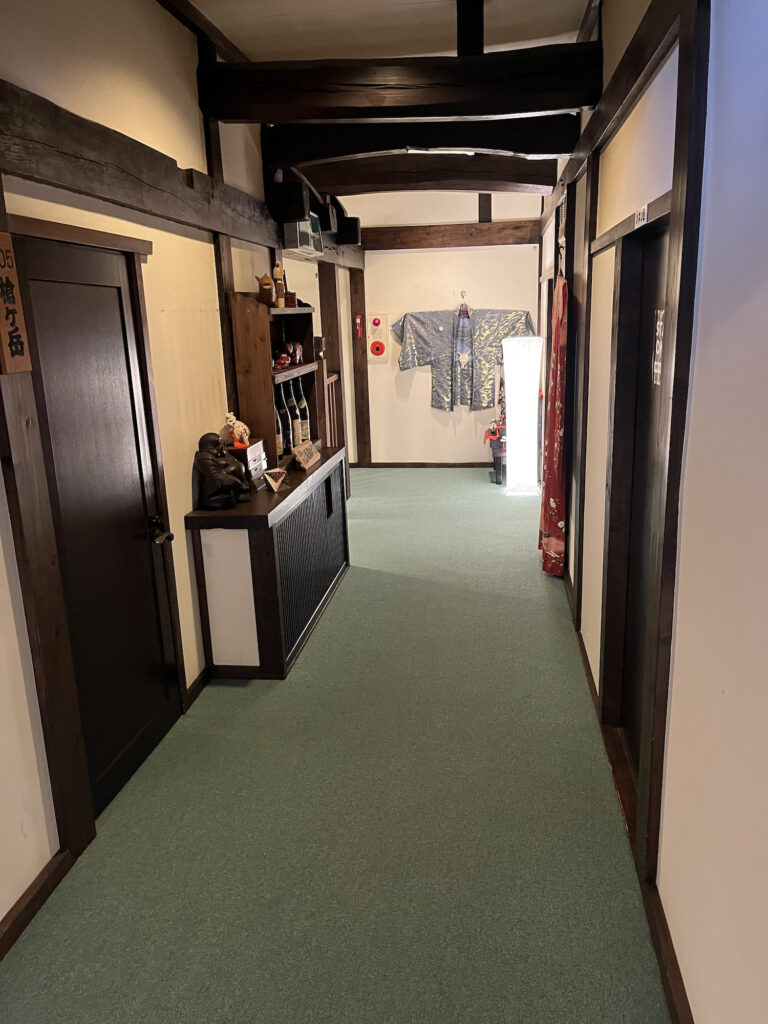
The staff greeted us with a quiet bow, our bags washed and whisked away before we even noticed. Slippers were offered by size and color, and we were guided down a tatami-matted hallway to our room, 201— a minimalist space with sliding shoji screens, low wooden furniture, and the sound of raindrops gently tapped the stones outside the paper windows.
A pot of hot green tea was waiting, alongside wagashi (seasonal sweets), and the host explained the details of our stay in calm, unhurried Japanese — occasionally switching to English with a warm smile or using her cell phone to translate large phrases. There was no rush. Just calm.
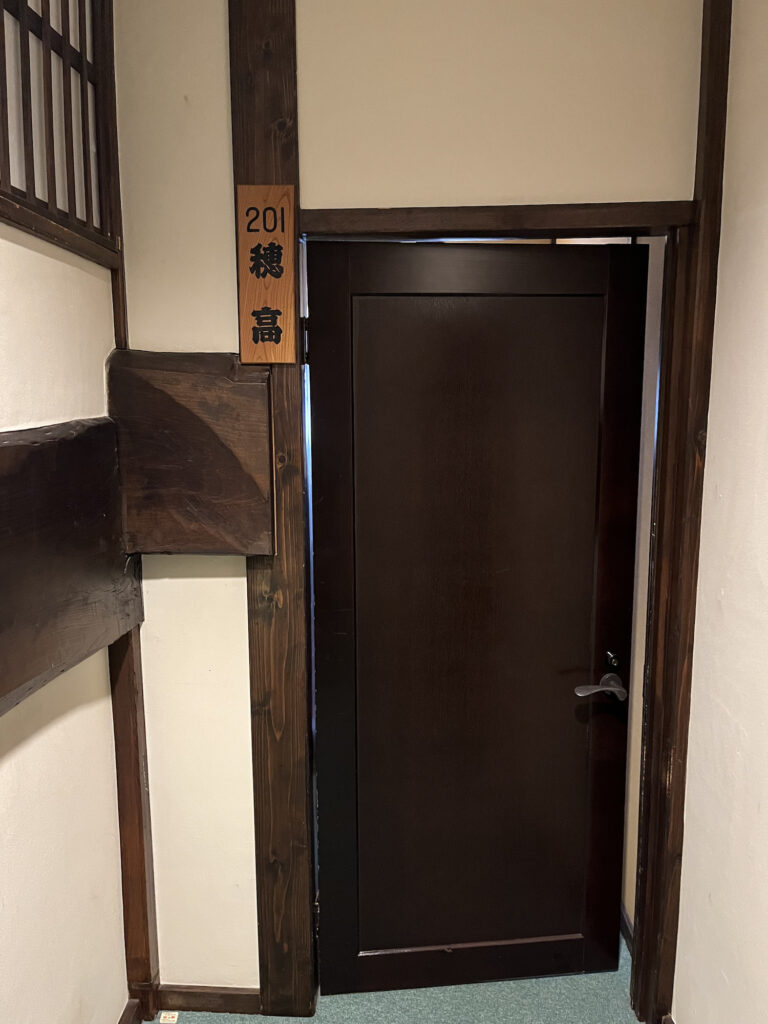
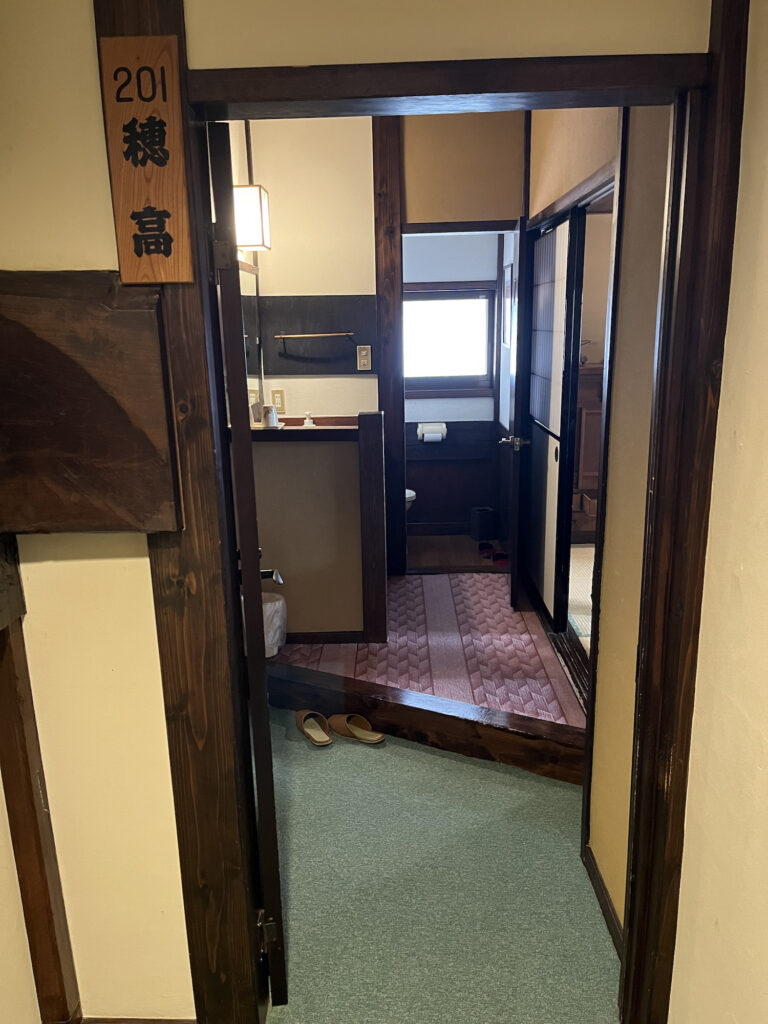
After a quick settle in, we made our way to the onsen, the traditional hot spring bath. Although we were seperate we wanted the experience, take your time:) The steam rose like a curtain around the pool, set in a quiet room of what I thought was a pine board. After a long day of travel, lowering into that warm, mineral-rich water felt like pressing a reset button for body and soul.
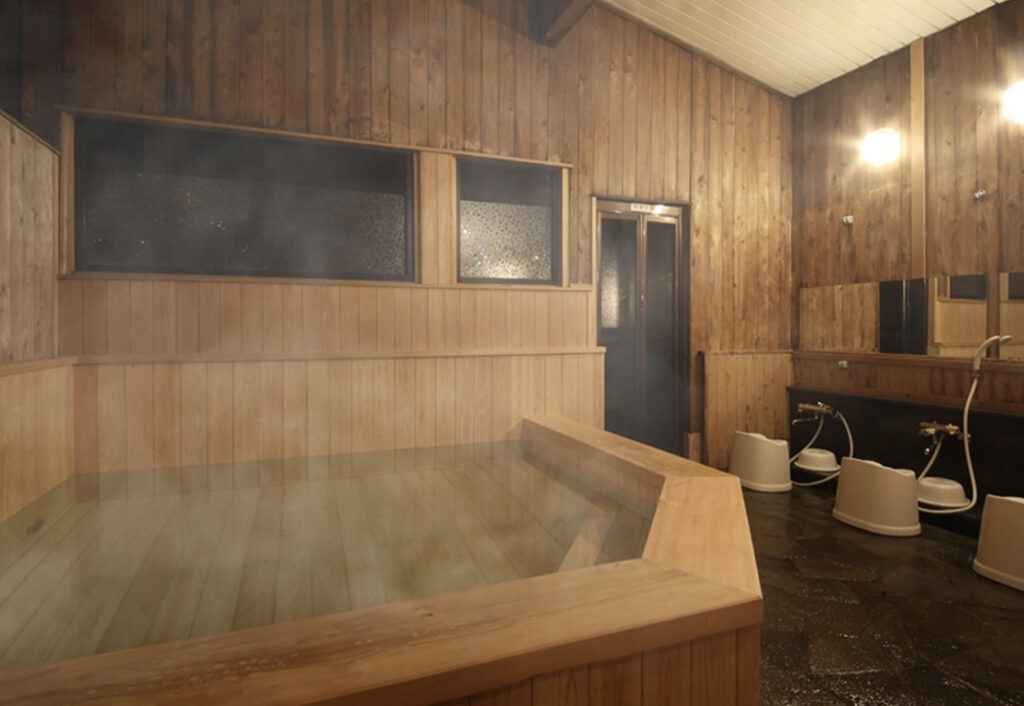
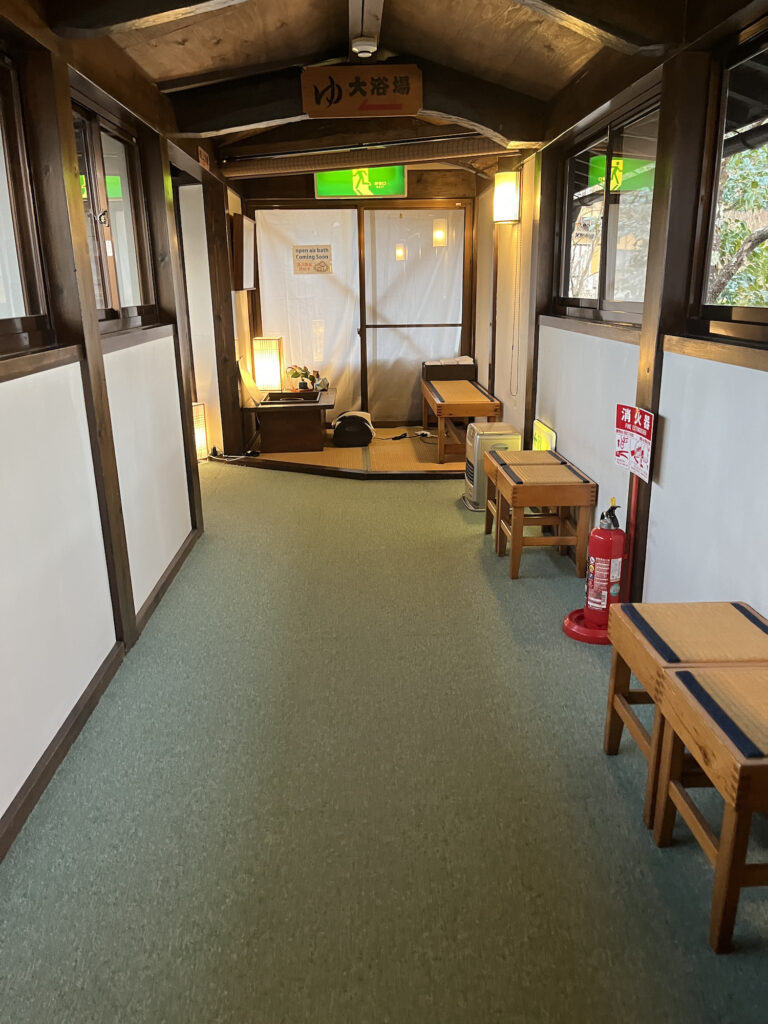
There’s a quiet etiquette to bathing in Japan — no swimsuits, wash first, move slowly — and it turns the experience into something meditative. Closing my eyes, time felt suspended.
Once back in our room, the futons were laid out — soft mattresses with thick, fluffy duvets directly on the tatami floor. Lying there, wrapped in warmth, the only sound was the occasional breeze outside and the distant hush of running water. No glowing screens. No city noise. Just silence. We fell asleep faster than we expected, the kind of deep sleep that only comes from total peace.
Staying at a ryokan is more than just accommodation. It’s an immersion into Japanese hospitality, or omotenashi — a philosophy of thoughtful, anticipatory care. Everything is intentional, from the food to the furnishings to the way you’re guided, not managed.
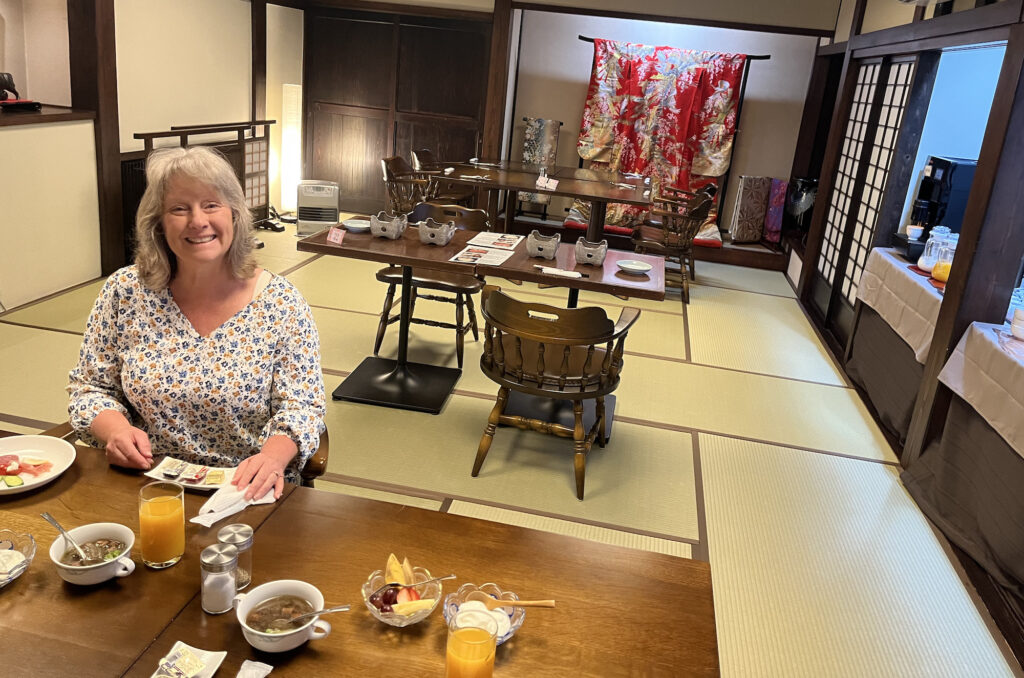
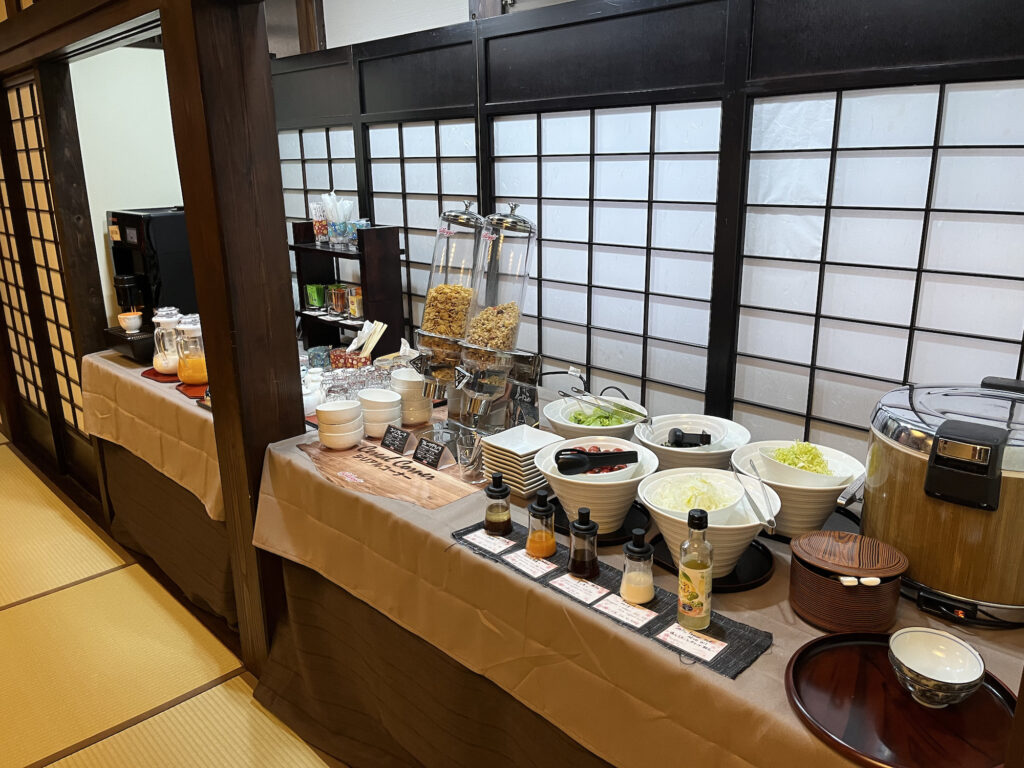
We wanted to slow down, to reconnect with simplicity, or just to feel deeply cared for in a way that feels almost forgotten in the modern world — a ryokan stay is essential.
After an amazing ‘Western Breakfast’ at our Ryokan, we began our morning in Takayama with a gentle stroll through the Miyagawa Morning Market, nestled alongside the Miyagawa River. The smell of fresh mochi and miso soup filled the cool air as we wandered past stalls selling seasonal produce, local crafts, pickles, and handmade treats. We bought a few items for the trip back including some Japanese honey.
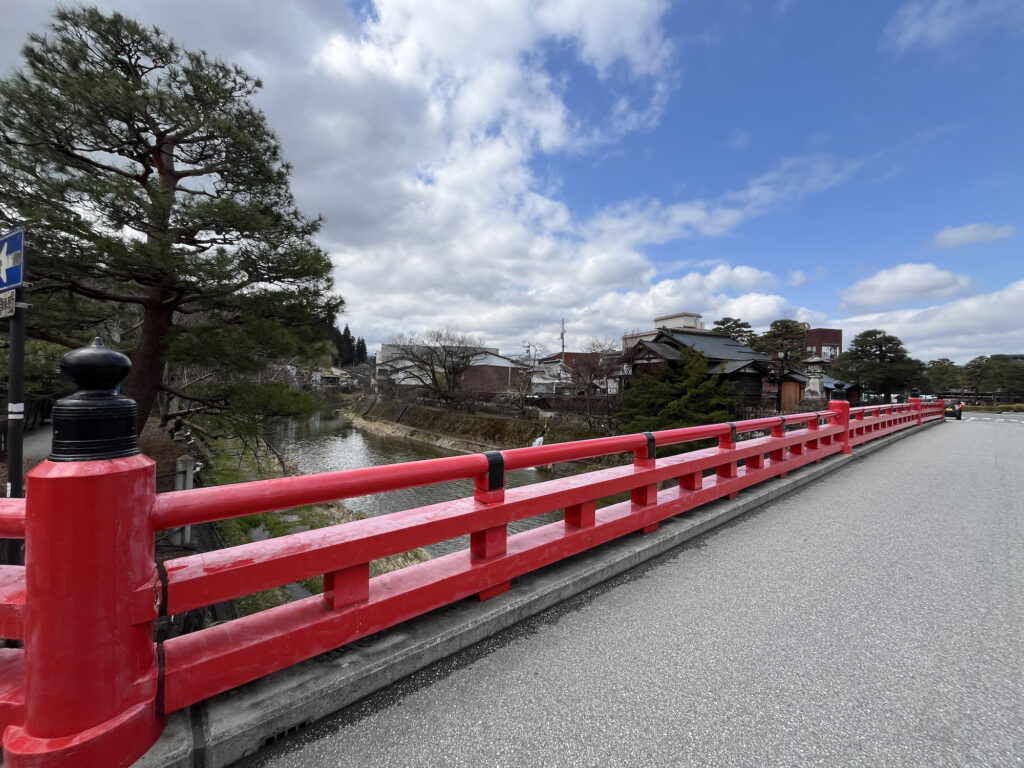
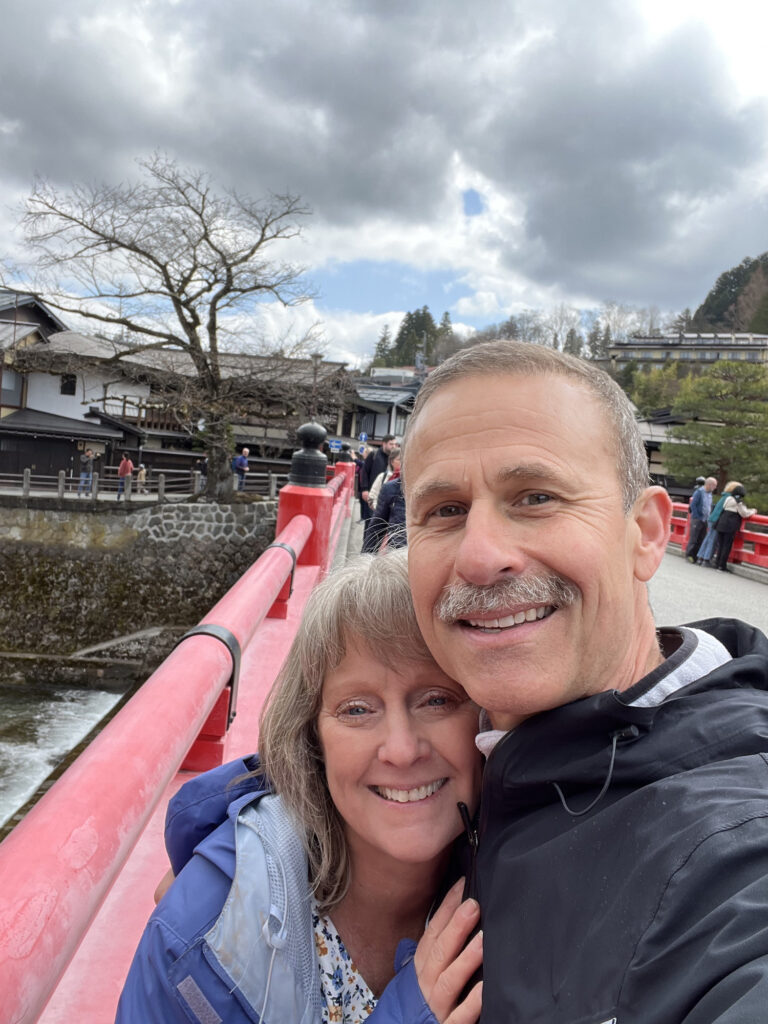
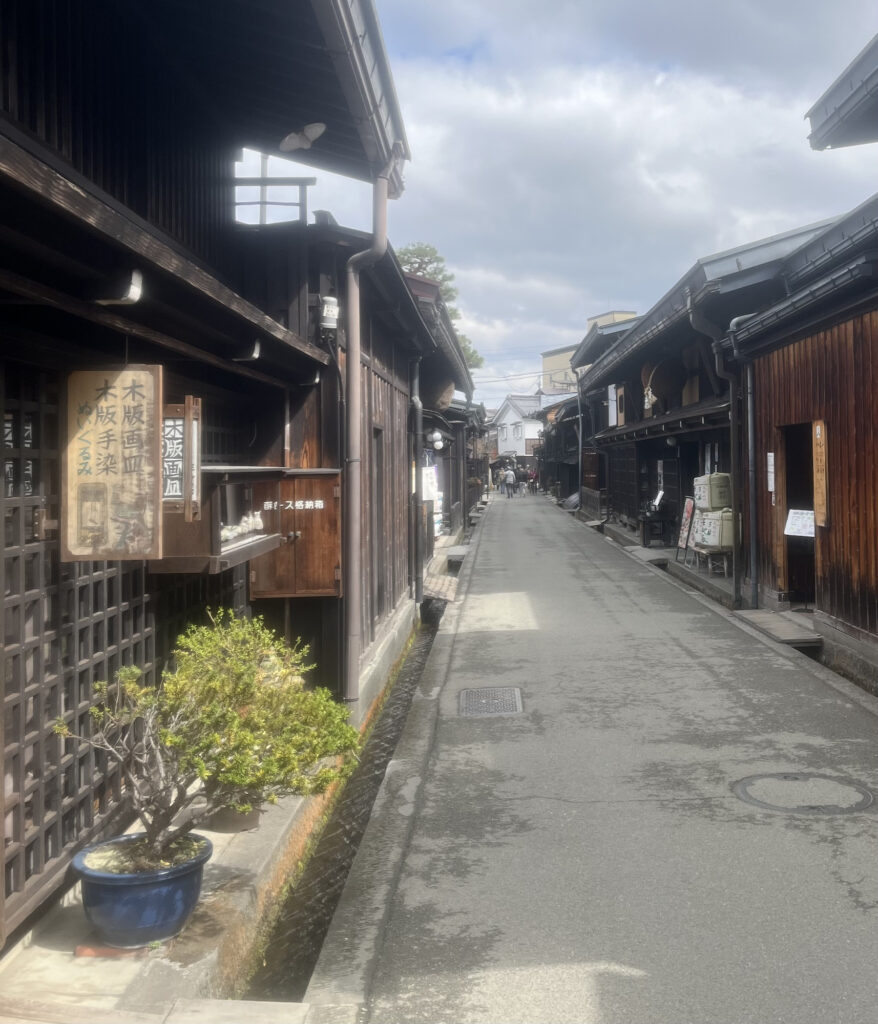
Crossing the iconic ‘red’ Nakabashi Bridge, we entered Takayama’s Old Town, a perfectly preserved district of narrow lanes, dark wooden facades, and sake breweries marked with cedar balls hanging outside.
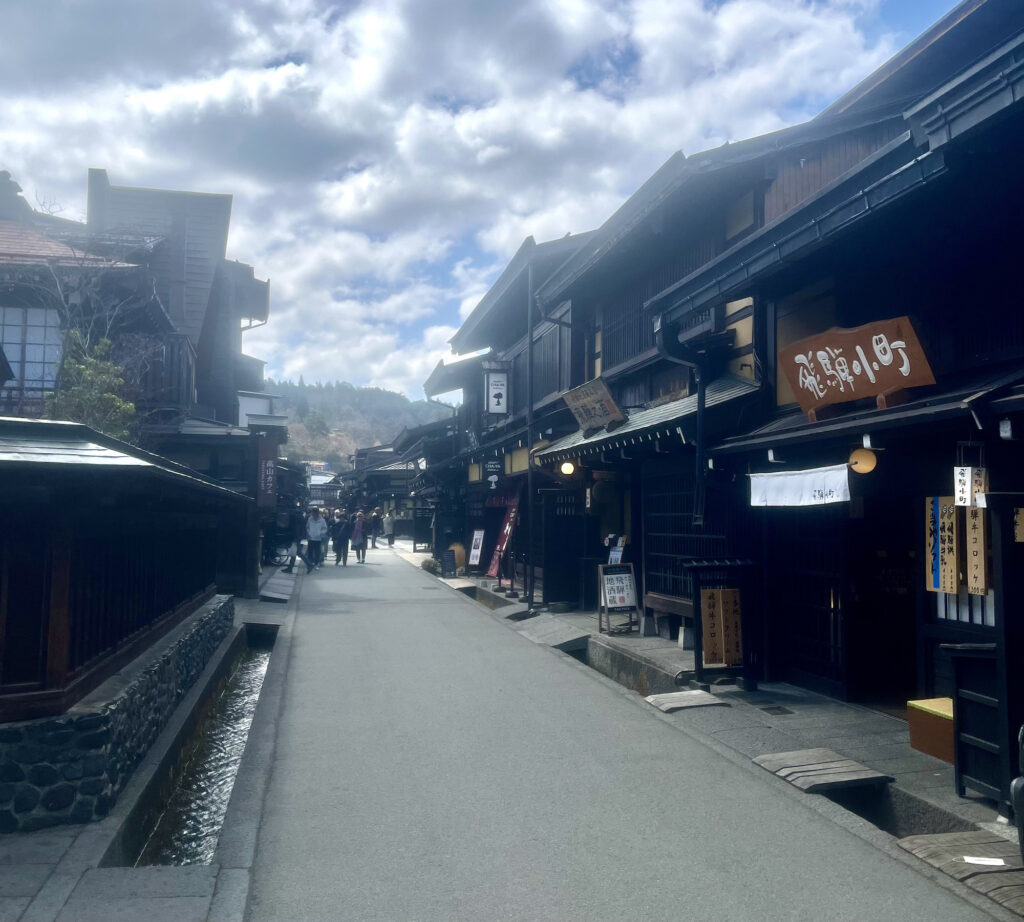
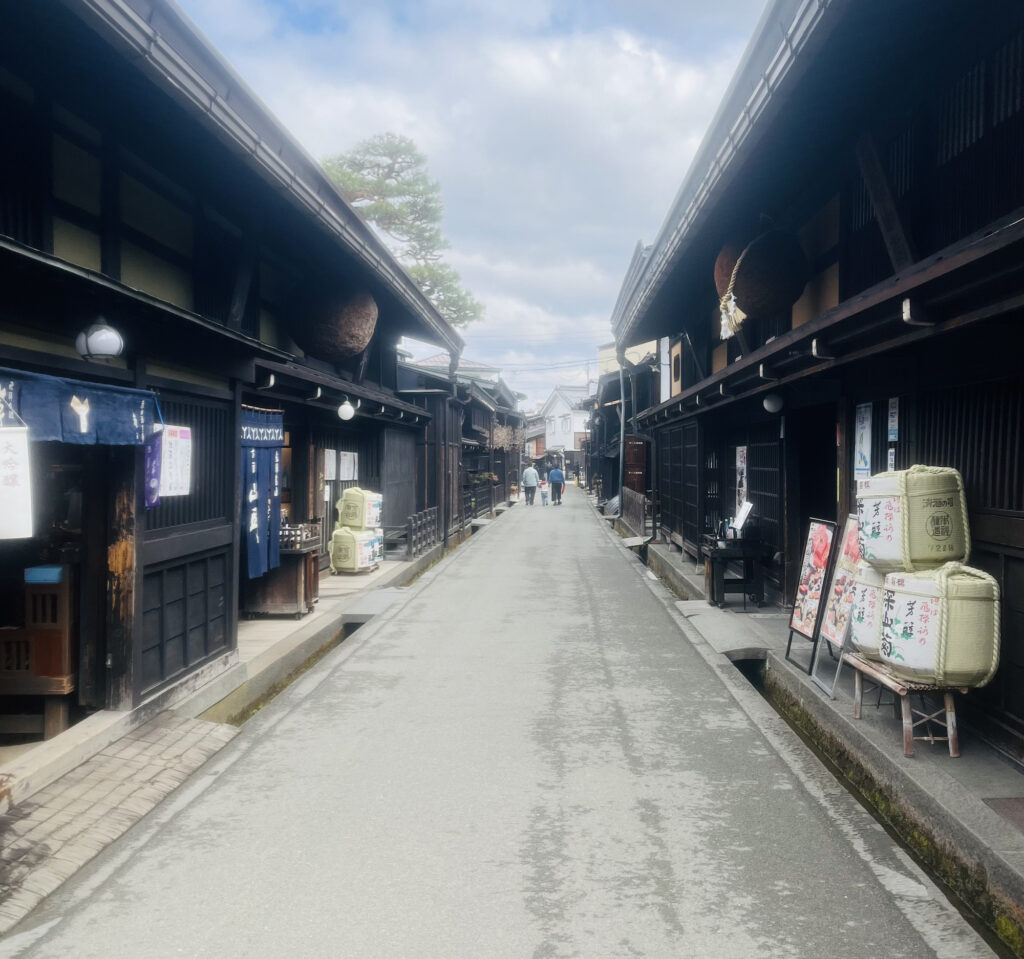

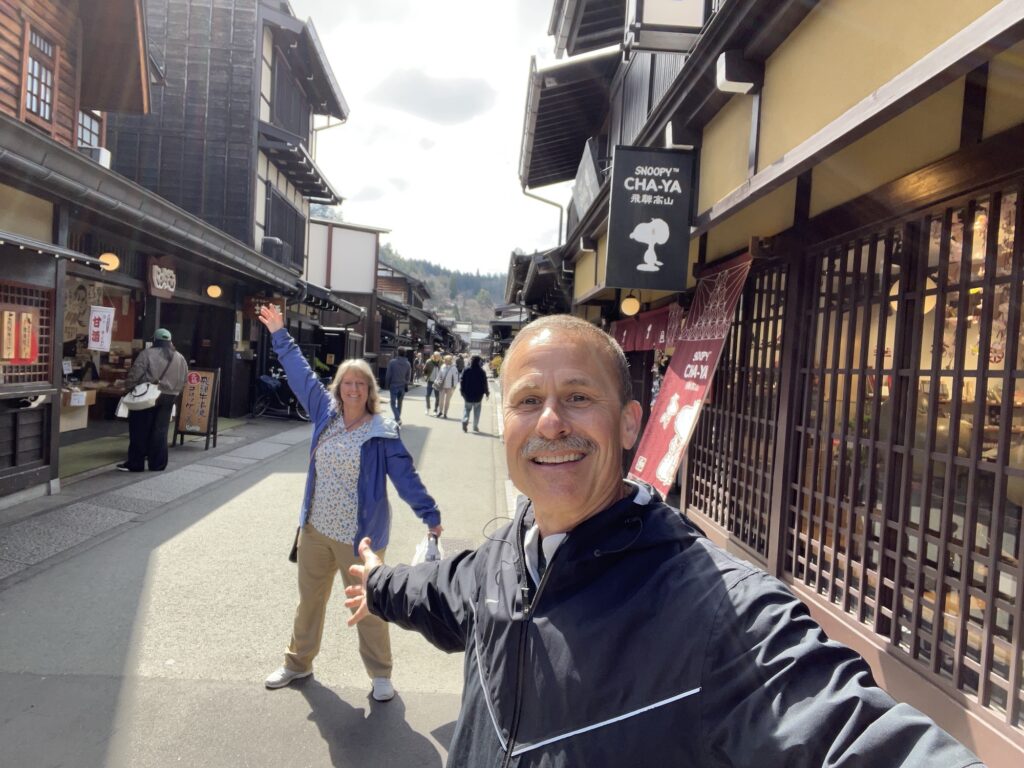
We explored at a relaxed pace, popping into traditional merchant houses and taking in the craftsmanship of everything from chopsticks to hand-painted ceramics. If you love slow travel and places where time seems to linger, Takayama is pure magic.
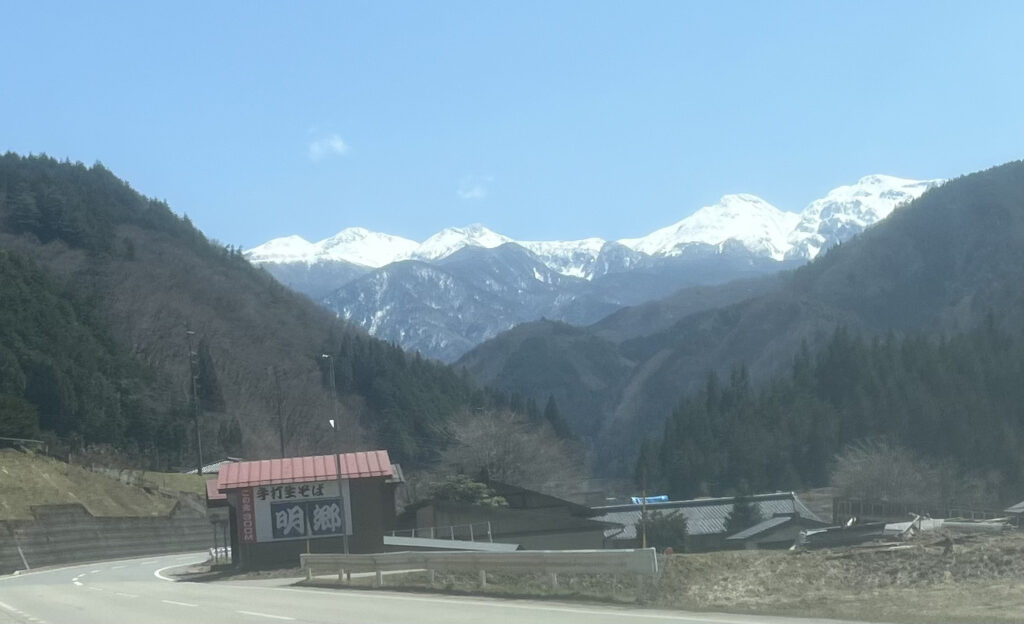
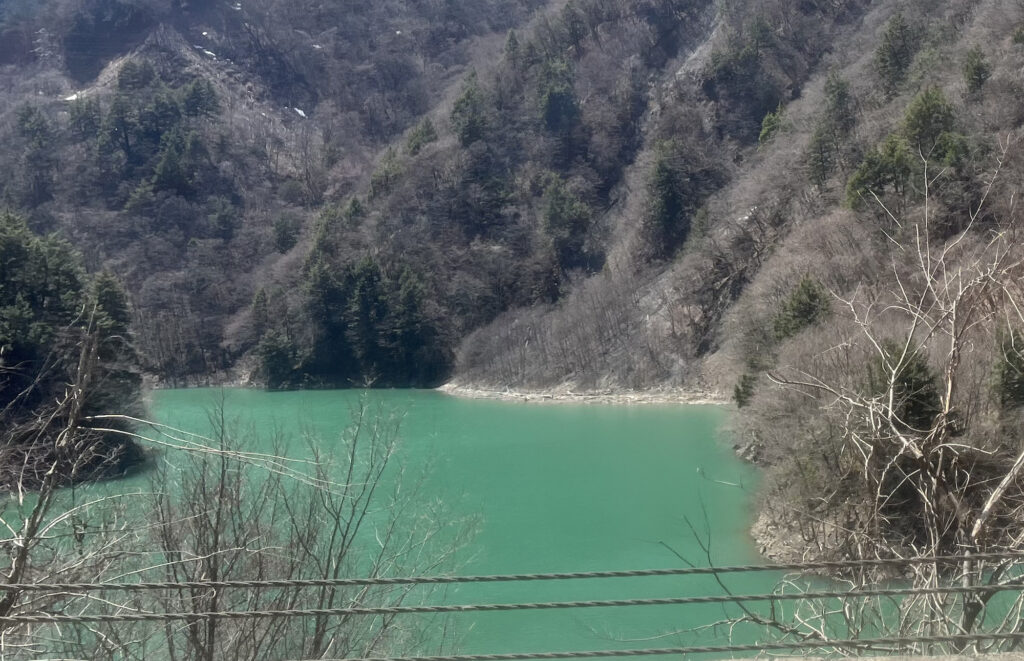

The drive from Takayama to Matsumoto is nothing short of stunning — winding mountain roads, the most majestically snow cover peaks. scenic valleys, and rivers cutting through the landscape. After about two hours, the city of Matsumoto welcomed us with one of Japan’s most iconic treasures. Known for its striking black exterior and elegant structure, Matsumoto Castle, the ‘Crow Castle” is a National Treasure of Japan — and it absolutely feels like one. Surrounded by a wide moat and cherry blossoms just beginning to bloom, the castle is both fierce and beautiful. Huge mountain ranges covered in snow loomed in the background, unfortunately today they were shrouded in clouds.
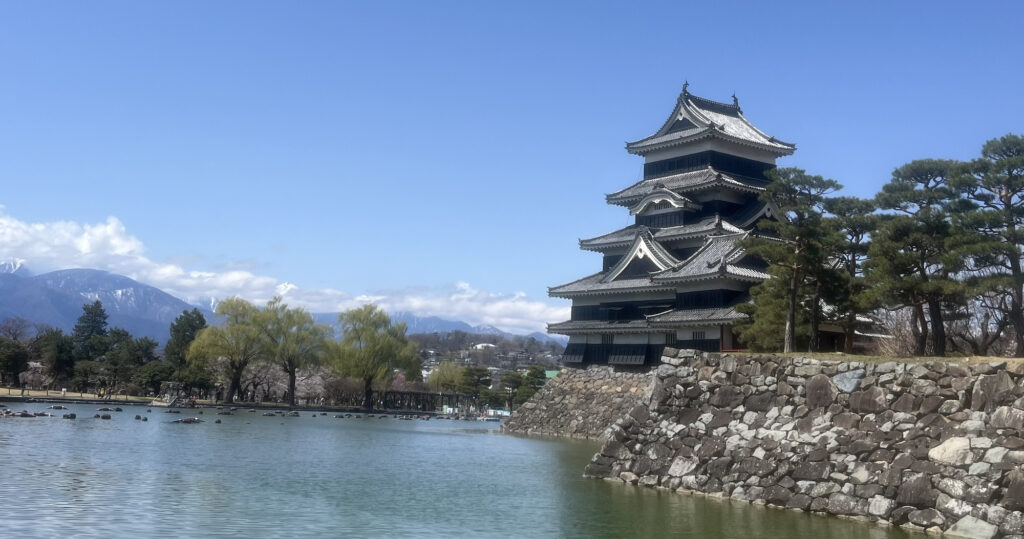
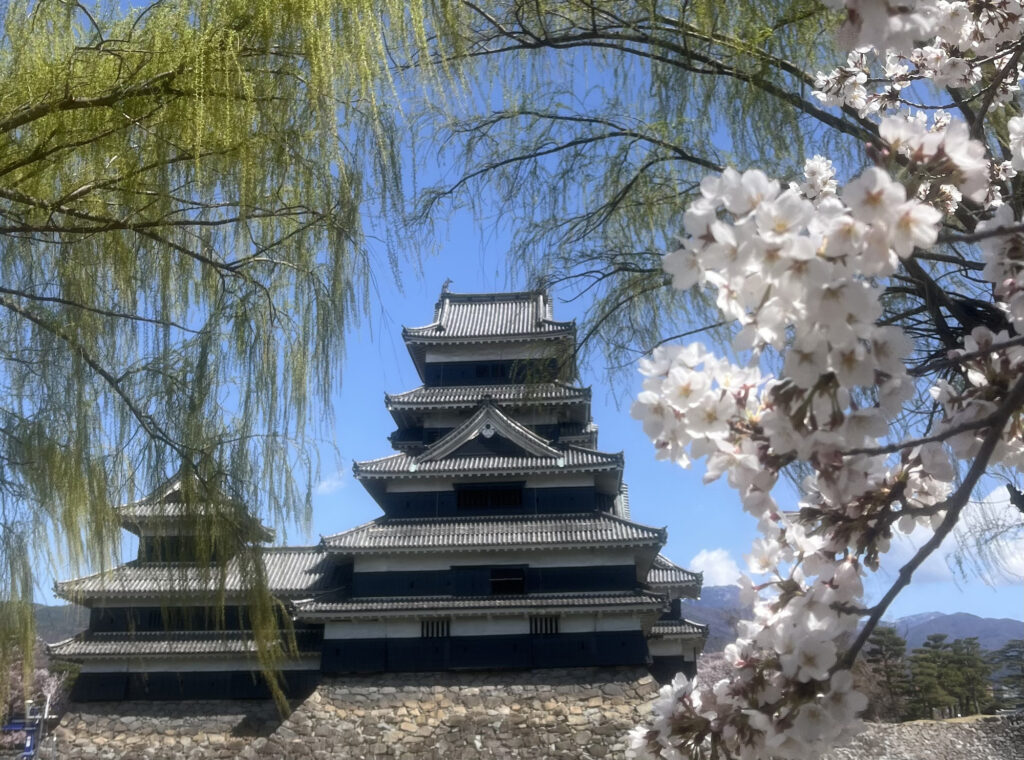
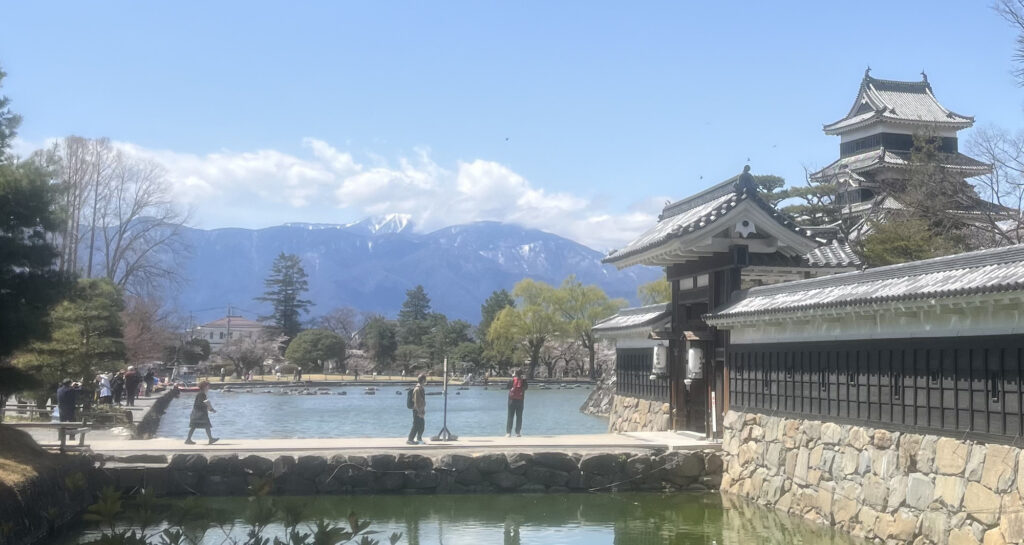
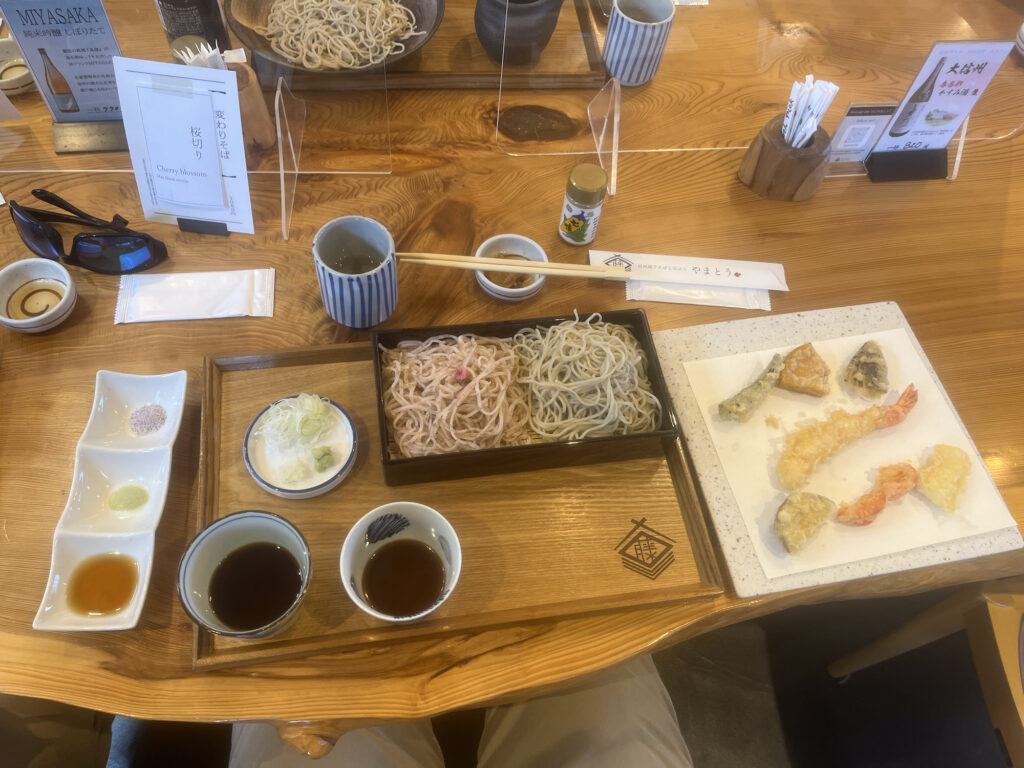
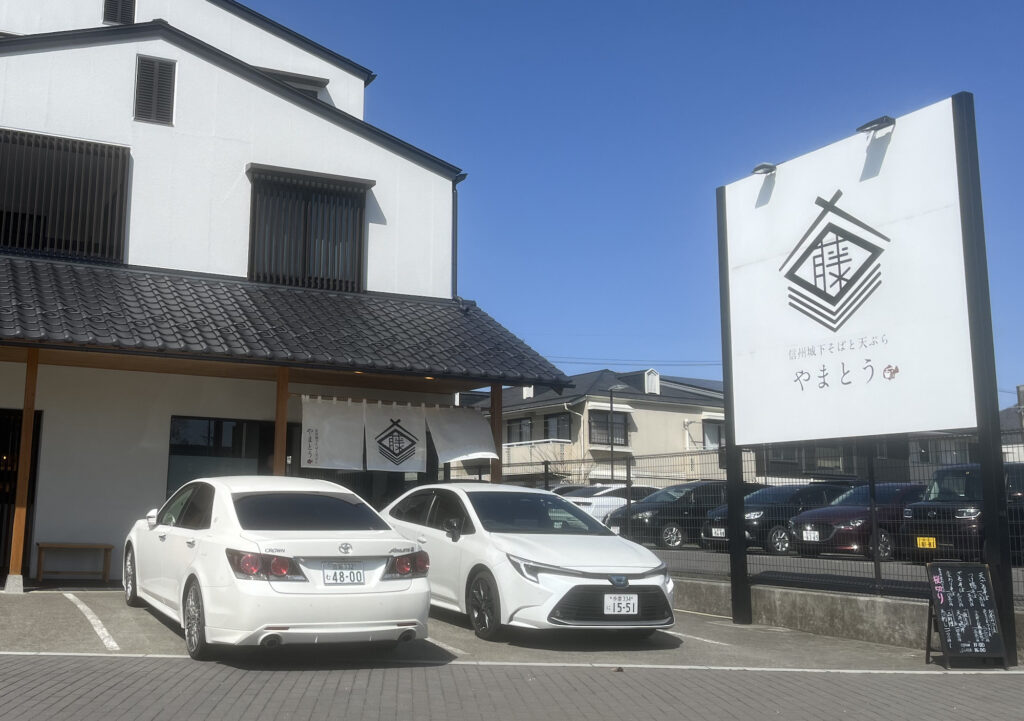
After Matsumoto, we made our way toward the Fuji Five Lakes region. As golden hour approached, we arrived at one of Japan’s most photographed spots: the Chureito Pagoda. The climb up the steps was real (especially after a long day), but when we reached the top — wow.
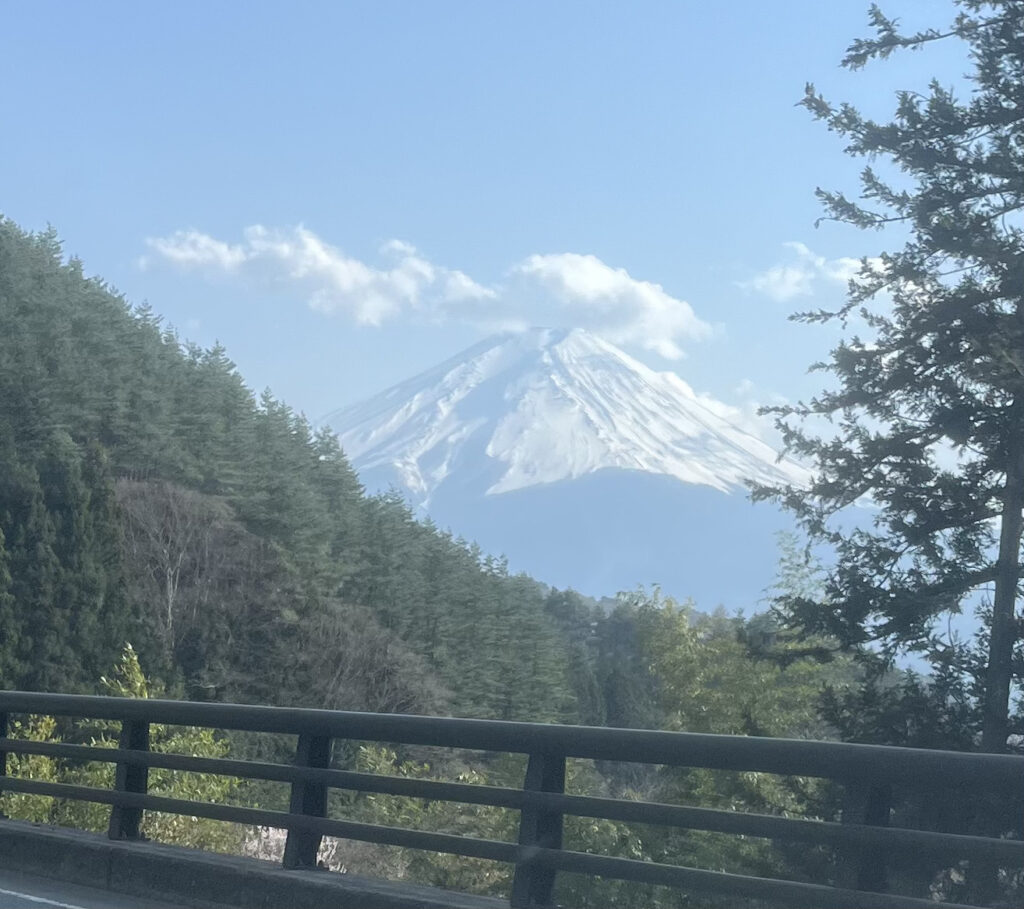
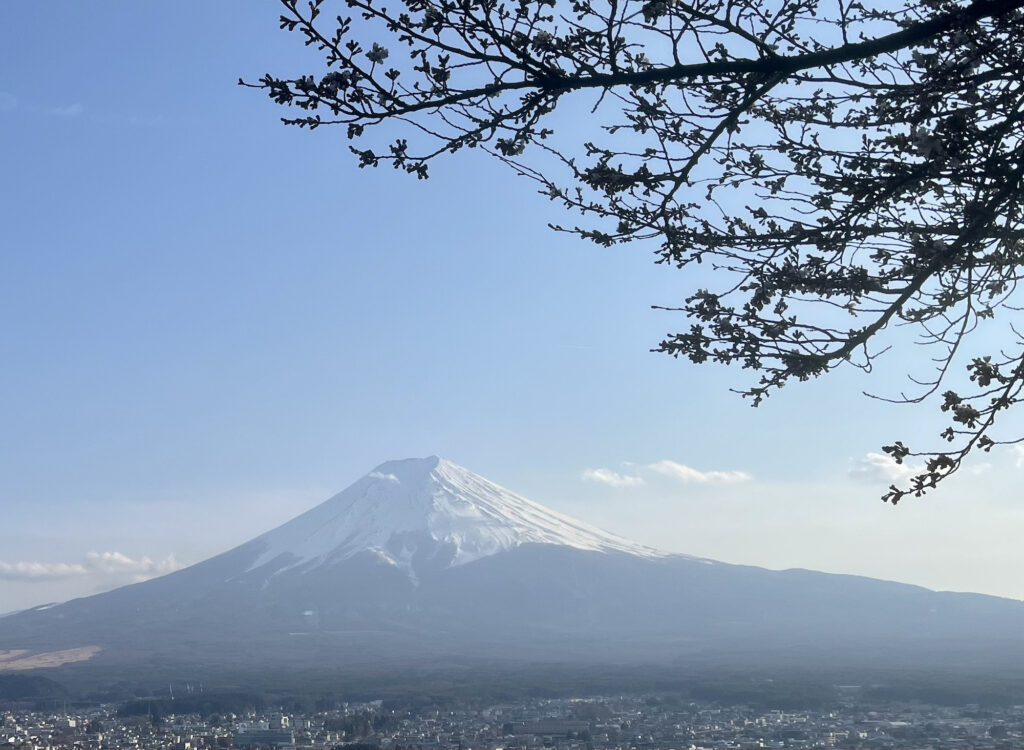
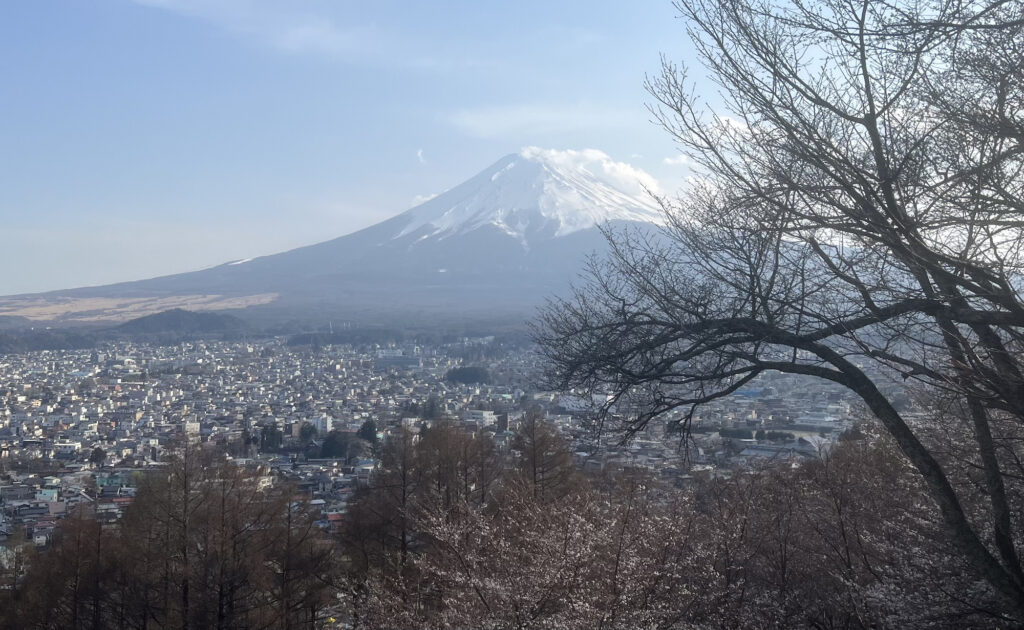
There it was: Mt. Fuji, perfectly framed behind the bright red pagoda, dusted with snow and glowing in the light of the afternoon sun. It felt like the moment we visited Mt Rushmore with the kids, this iconic site in front of me I have seen in movies, books, blogs and folklore, now it is in front of me. After a grueling hike up, they only allow a handful at a time at the viewpoint area. We waited for our chance, talking to other travelers about their adventures, then once they’re gazing out, for a moment, everything felt perfectly aligned — nature, architecture, and gratitude. Kellie and I were both in awe.
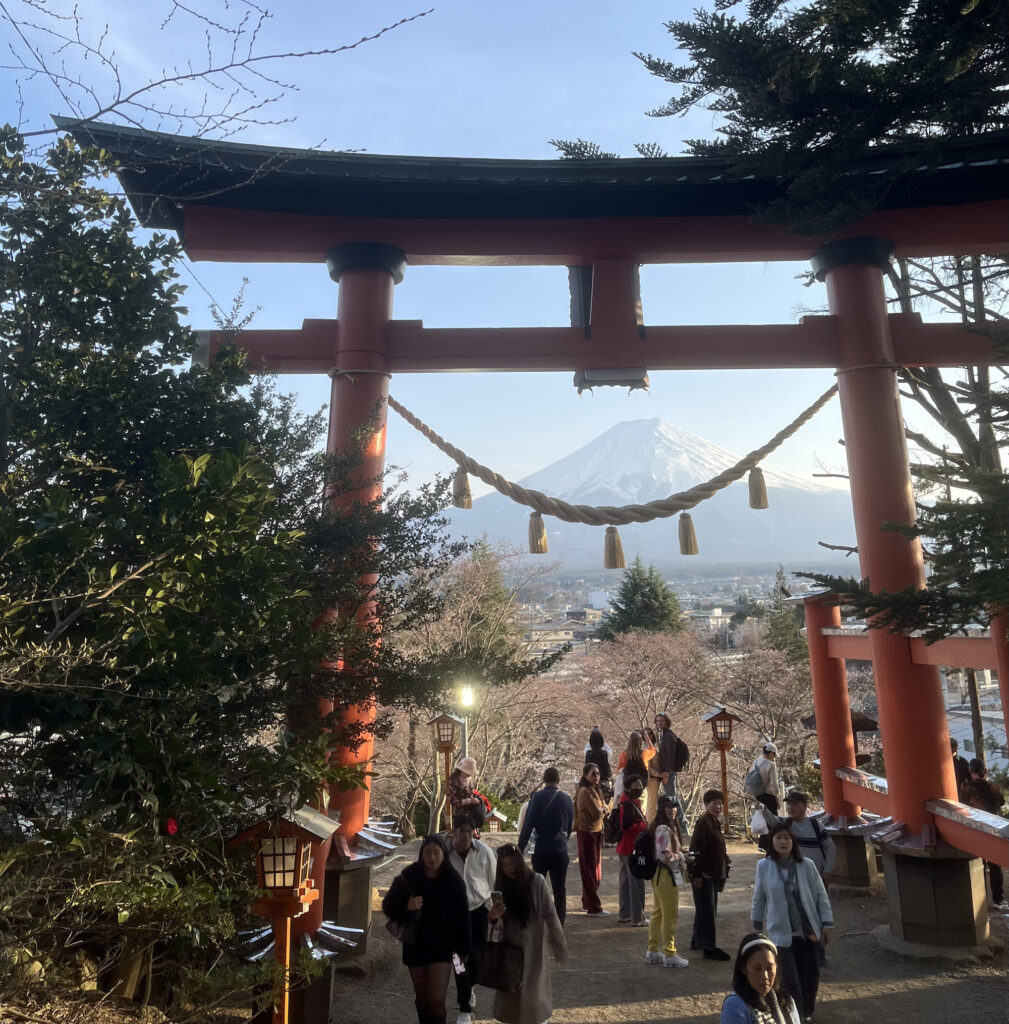
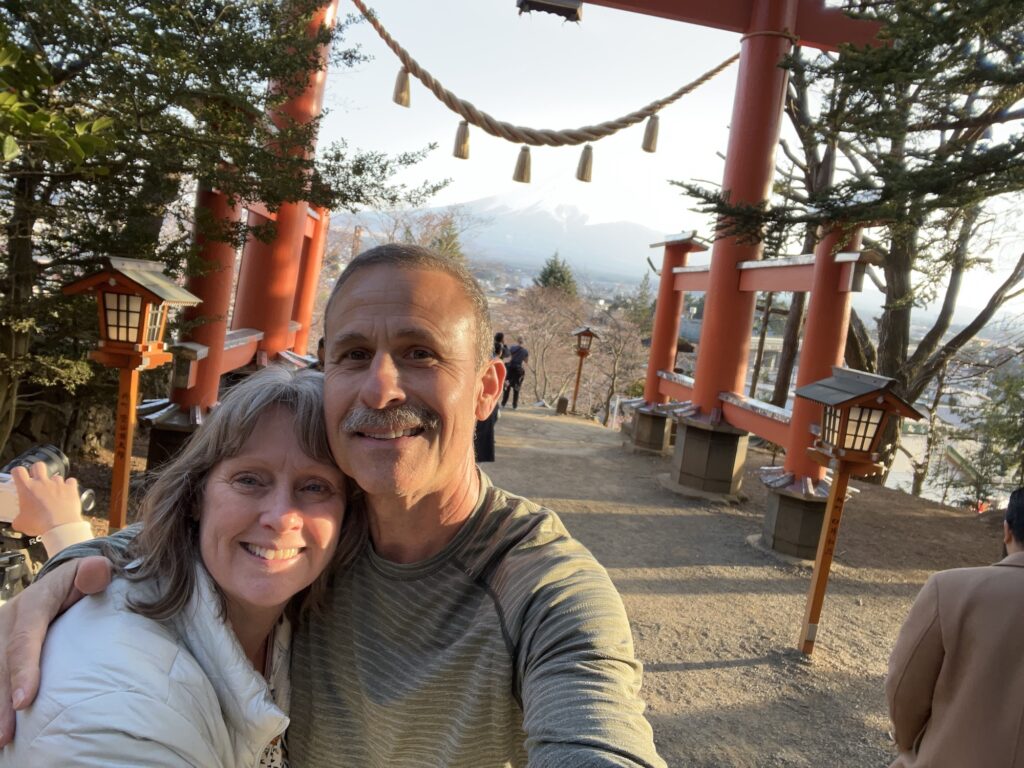
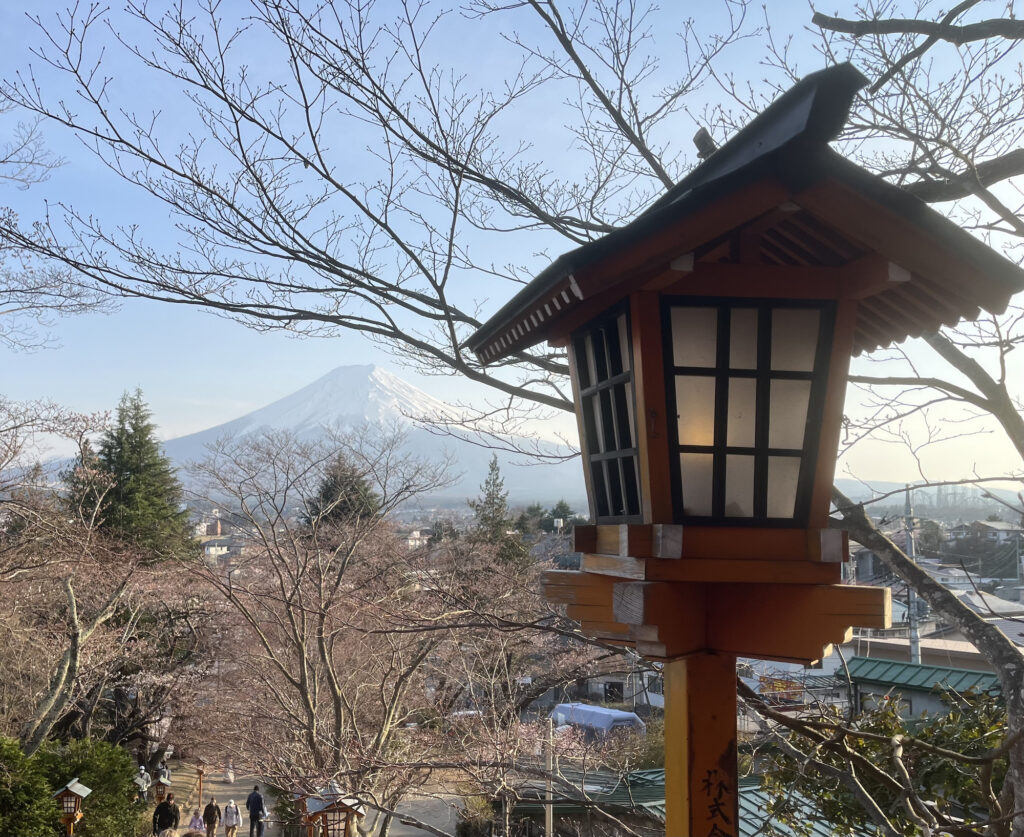
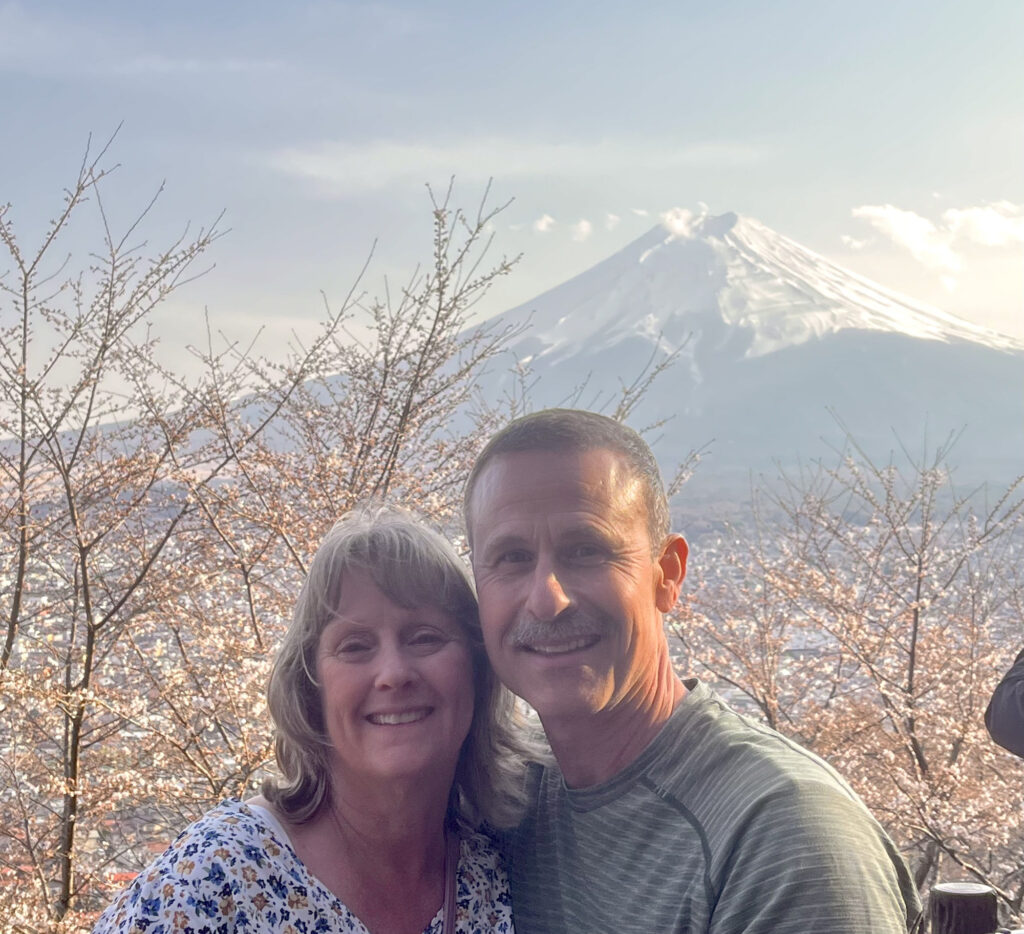
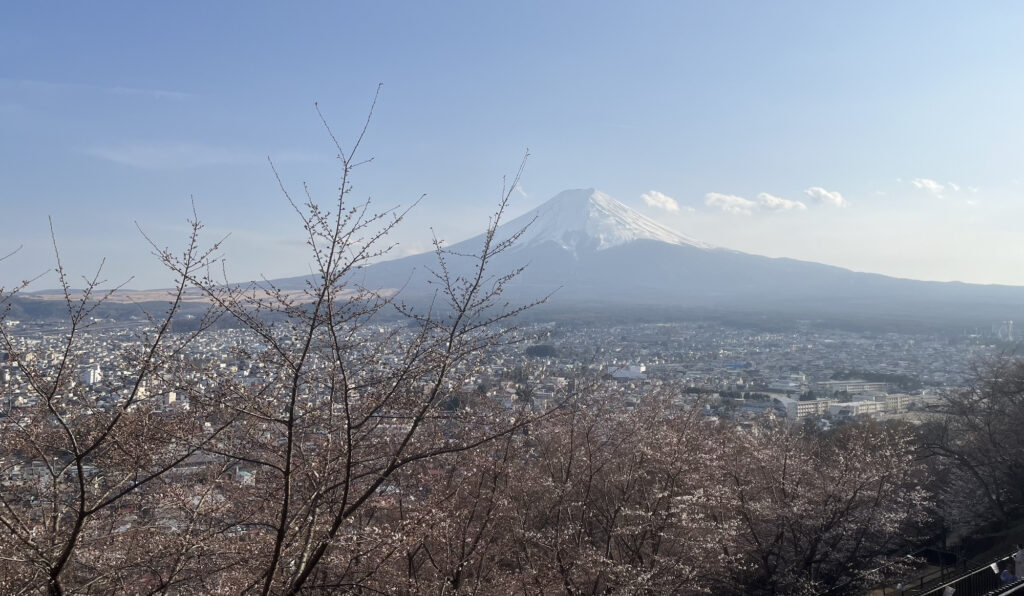

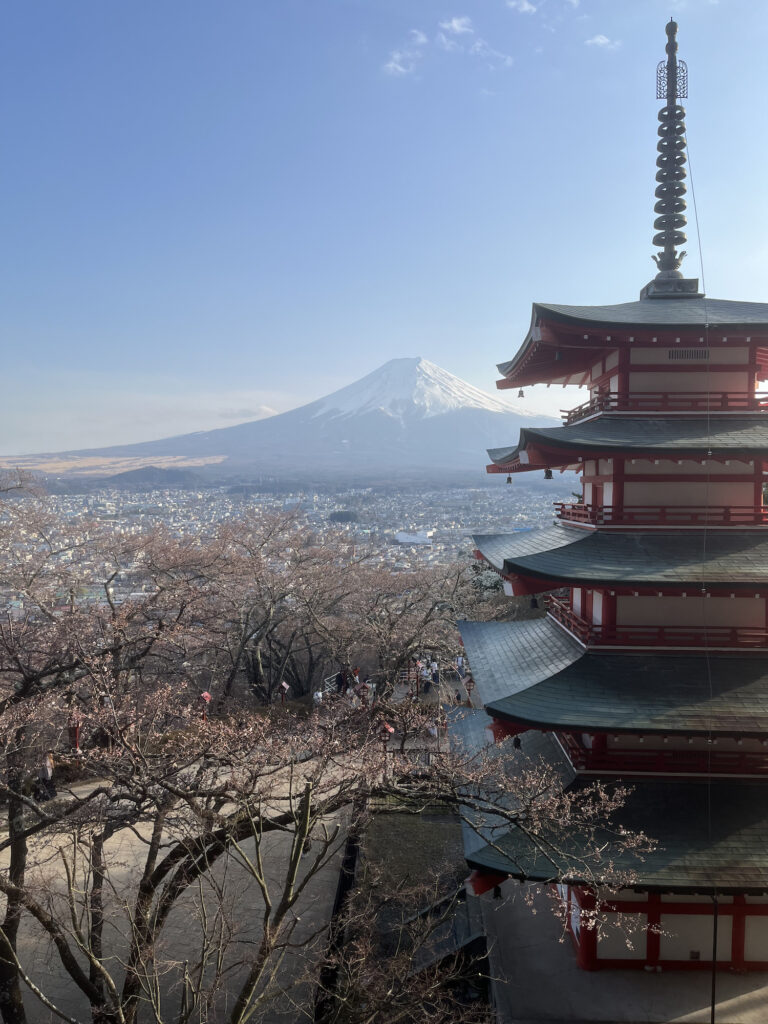

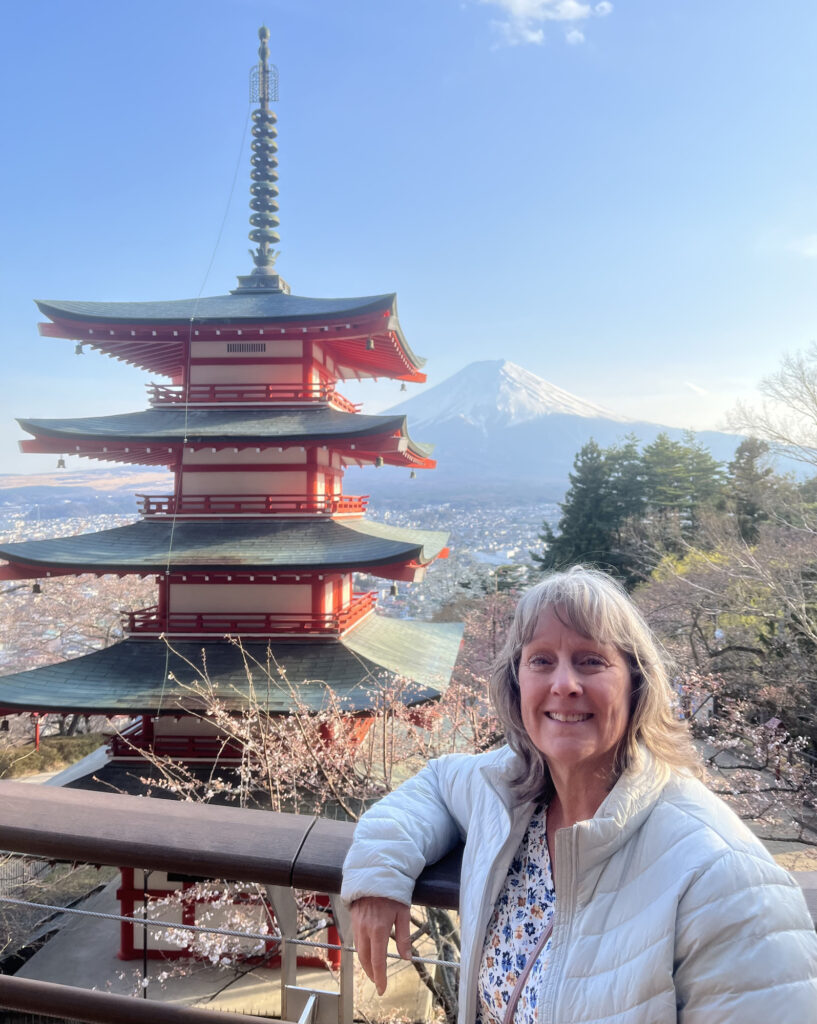
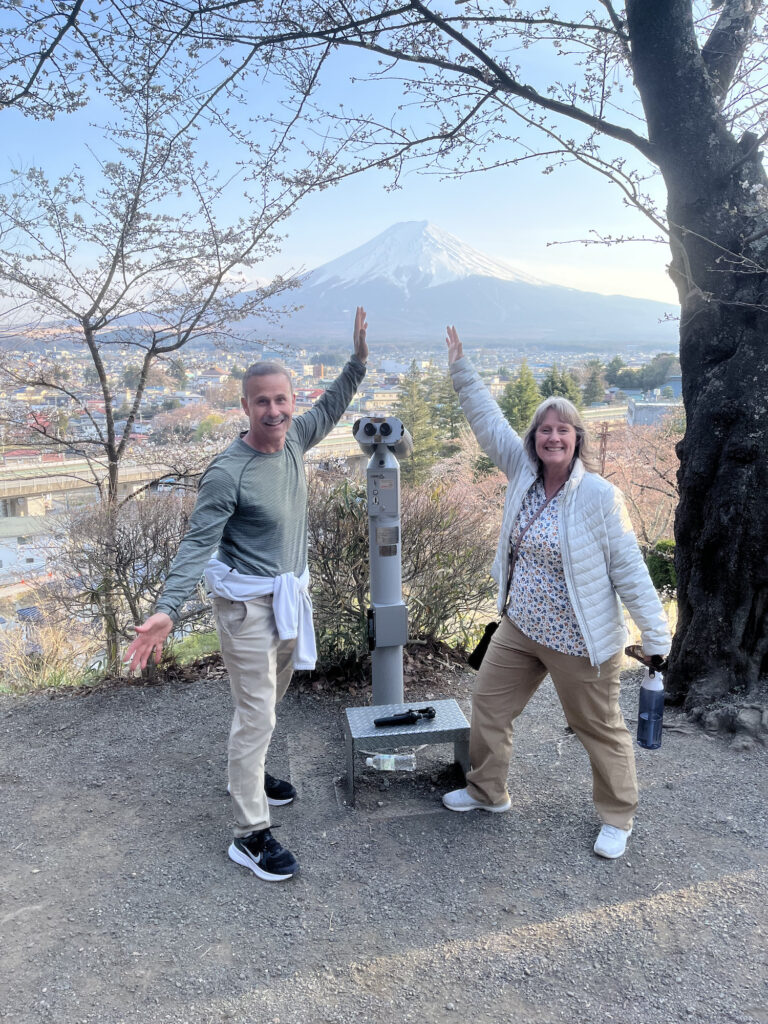

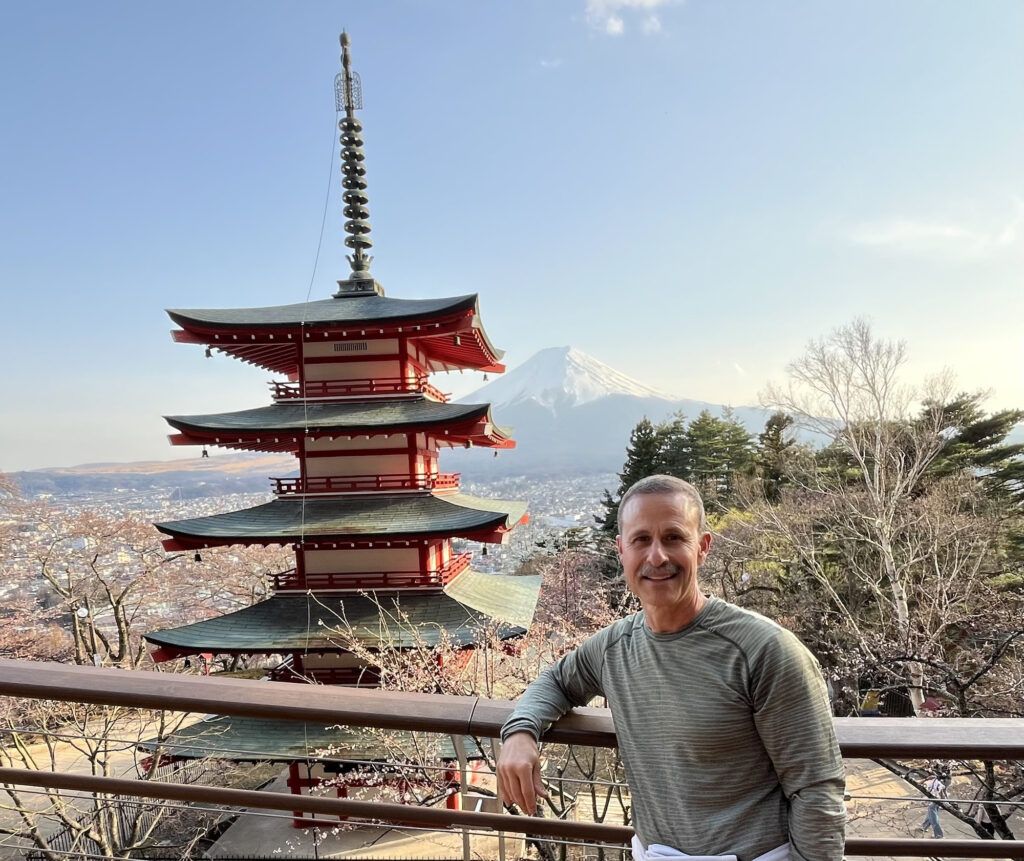
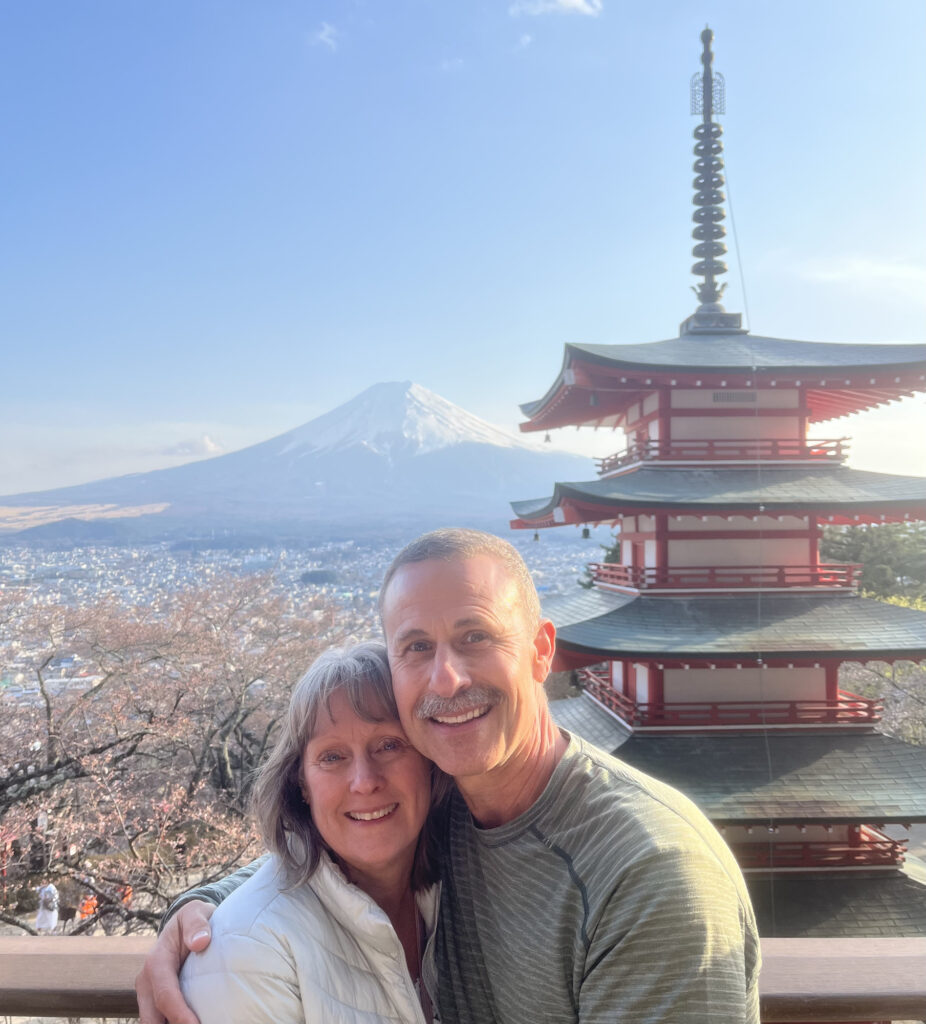
As night fell, we checked into the Fuji Marriott Hotel Lake Yamanaka, our home for the night. The hotel blends modern comfort with traditional touches, and after a long day of travel, the soft beds, onsen bath, and serene lake views felt like pure luxury.
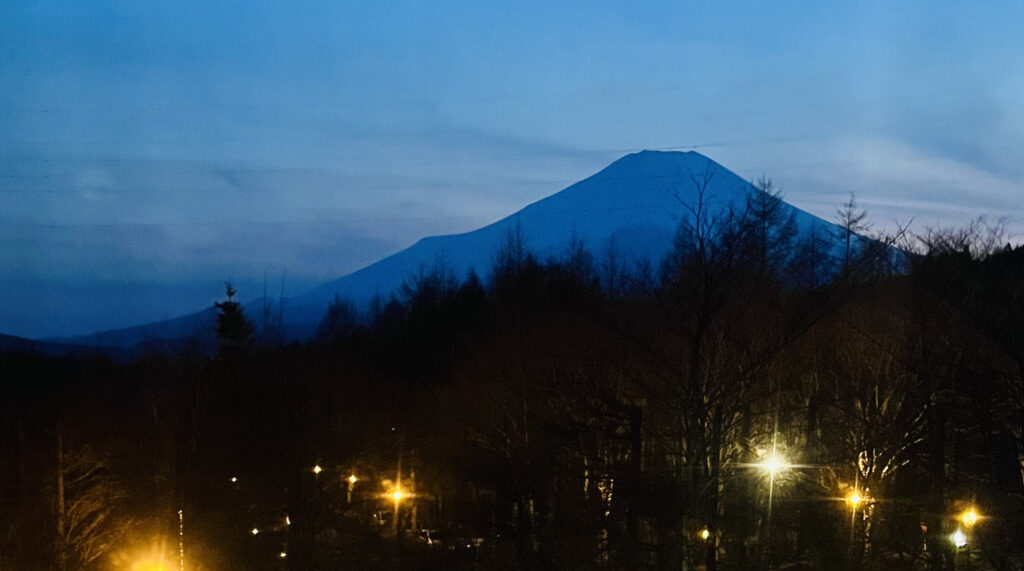
We ended the evening with free snacks, beer, orange juic, and sat at a table in our room looking out the window — where Mt. Fuji still loomed large, bathed in moonlight.

